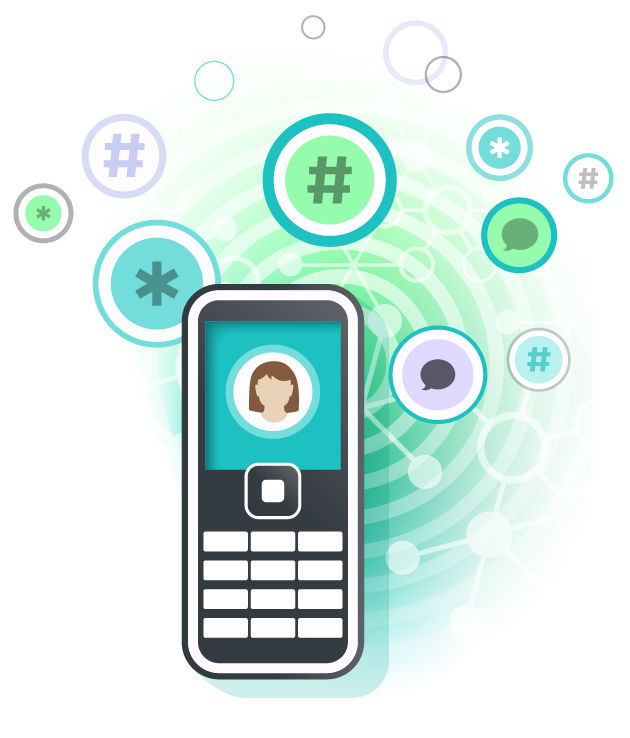MESSAGING
USSD
Want to reach a broad client base using feature
phones?
USSD (Unstructured Supplementary Service Data) is a real-time or instant messaging service during which a USSD session allows a two-way exchange of a sequence of data.
Unlike SMSs, USSD messages create a real-time session which remains open, allowing a two-way exchange of a sequence of data. This makes USSD more responsive than services that only use SMS.

Why choose USSD?
Activate and integrate various messaging platforms for optimal results.
HOW IT WORKS
Unstructured Supplementary Service Data (USSD), sometimes referred to as “quick codes” or “feature codes”, is a communications protocol used by GSM cellular telephones to communicate with the mobile network operator’s computers.
When a user sends a message to the phone company network, it is received by a computer dedicated to USSD. The computer’s response is sent back to the phone, generally in a basic format that can easily be seen on the phone display.
A typical USSD message starts with an asterisk (*) followed by digits that comprise commands or data. Groups of digits may be separated by additional asterisks. The message is terminated with a hash symbol (#).
Messages sent over USSD are not defined by any standardization body, so each network operator can implement whatever is most suitable for its customers. This platform reduces the pressure on your CRM system, with immediate and clever responses to client calls.
USSD CAN BE USED FOR
> WAP browsing
> Prepaid callback service
> Mobile-money services
> Location-based content services
> Menu-based information services
The advantages of using USSD
USSD remains a powerful marketing tool.
ENHANCED MOBILE MARKETING CAPABILITIES
USSD is sometimes used in conjunction with SMS. The user sends a request to the network via USSD, and the network replies with an acknowledgement of receipt:
“Thank you, your message is being processed. A message will be
sent to your phone.”
Subsequently, one or more mobile terminated SMS messages communicate the status and/or results of the initial request. In such cases, SMS is used to “push” a reply or updates to the handset when the network is ready to send them. In contrast, USSD is used for command-and-control only. The interactive data services allows for enhanced mobile marketing capabilities.
NETWORK INTEGRATION
Some operators use USSD to provide access to real-time updates from social-networking websites like Facebook and Twitter.
USSD can be used to provide independent calling services such as a callback service (to reduce phone charges while roaming).
RESPONSIVE
The connection remains open, allowing two-way communication.
NETWORK INTEGRATION
Integrate with social media networks with automated replies.
